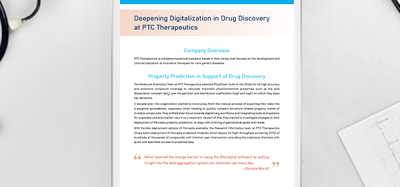First virtual clinical trial examines two promising Alzheimer’s drugs
Posted: 4 November 2022 | Catherine Eckford (European Pharmaceutical Review) | No comments yet
A first-of-its-kind simulated clinical trial has modelled long-term health outcomes for two key Alzheimer’s drugs to determine optimal treatments.


A new computer model has successfully simulated a clinical trial evaluating the efficacy of aducanumab and donanemab for Alzheimer’s disease (AD), establishing a gradual increase in dosage up to the maximum dose helps to minimise cognitive decline and limit side effects.
The US-based researchers modelled personalised treatments for each virtual patient, assessing US Food and Drug Administration-approved aducanumab and donanemab, a therapy currently being evaluated and other potential AD therapies.
The model had two set timeframes: medium-term (78 weeks) and long-term (10 years) with low-dose (6mg/kg) and high-dose (10mg/kg) regimes for aducanumab and a single-dose 1400mg regime for donanemab. These are identical to doses used in human trials for FDA approval.
In the simulation, both drugs aided in long-lasting, substantial removal of beta-amyloid plaques, a peptide found in the brains of patients with Alzheimer’s. Both treatments had a minor effect on slowing cognitive decline, however donanemab proved to be slightly more effective than aducanumab over a simulated 10-year period.
“We’re calling this a virtual clinical trial, because we used real, de-identified patient data to simulate health outcomes,” stated Wenrui Hao, Associate Professor of Mathematics at Penn State and lead author and Principal Investigator of the study. “What we found aligns almost exactly with findings in prior clinical trials, but because we were using a virtual simulation, we had the added benefit of directly comparing the efficacy of different drugs over longer trial periods.”
Co-principal investigator on the study, Dr Jeffrey Petrella, Professor of Radiology and Director of the Alzheimer Imaging Research Laboratory at Duke University added: “It often takes tens of millions of dollars and many years to do a head-to-head comparison of drugs.”
The role of virtual clinical trials for a largely misunderstood disease
Petrella clarified there is still uncertainty in whether removing amyloid plaques is efficient; if the intravenously delivered treatment, delivered on a monthly basis actually prevents or delays cognitive decline.
“… the 99 percent failure rate of [AD] trials [is due] to an incomplete understanding of the [diseases’] complex mechanisms. It is likely, therefore, that personalised treatment will need to play a central role in the future management and counselling of patients with AD.”
The models took into consideration the potential side effects of anti-amyloid therapy such as brain swelling and bleeding, headaches, dizziness, nausea, confusion and vision problems. Petrella explained virtual trials also incorporate evidence-based assumptions such as disease pathogenesis and therapeutic mechanism.
Discussing the impact the model can have on future trials, Petrella shared: “Despite these limitations, this is the first step towards tailored clinical trials. We’ve shown that this type of model can work. I envision it as a precision tool to enhance actual clinical trials, optimising dosages and combinations of drugs for individual patients.”
The study, supported by The National Science Foundation was published in the PLoS Computational Biology journal.
Related topics
Biologics, Biopharmaceuticals, Clinical Trials, Data Analysis, Dosage, Drug Development, Models, Personalised medicine, Research & Development (R&D), Therapeutics









